The UCSF Barbara and Gerson Bakar Research and Academic Building took a pivotal step forward Sept. 28 with the official groundbreaking of the new building, an innovative space that encourages collaboration between researchers across scientific disciplines to advance discoveries in health and science.
Located on the westernmost end of UCSF’s historic Parnassus Heights campus, the state-of-the-art structure is a key component in the revitalization project that began with the UCSF Health Helen Diller Hospital, which celebrated its groundbreaking this spring.
When it opens in early 2028, the Bakar Research and Academic Building (BRAB) will house research programs for cancer, microbiology, diabetes, immunology and cell biology. It will serve as the future home of the UCSF School of Nursing, driving new advances in clinical practice and health equity. And it will support graduate-level education across UCSF while creating modern spaces for clinical trials.
“The Bakar Research and Academic Building is a critical component of our project to reimagine the Parnassus campus and will serve as a hub for innovations in biosciences, health and graduate education into the future,” said UCSF Chancellor Sam Hawgood, MBBS. “UCSF is known for its collaborative and creative research. This will be a keystone for a revitalization project that will bring our most creative minds together to address the world’s greatest health challenges.”
Expanding research and education. The new nine-story building is set to open in early 2028. Its space will foster cutting-edge research collaboration, and its third level will be home to the School of Nursing.
Open Areas Foster Discovery
Designed by architecture firms HGA and Snøhetta, the $842 million building has been a collaborative process from the start, with input from educators, researchers and campus leaders to create a new model for tapping the wealth of curiosity and knowledge that makes UCSF so unique.
“This is an investment in our research and education that is designed to support both our current work and a new generation of innovators,” said Catherine Lucey, MD, MACP, UCSF executive vice chancellor and provost. “The open floor plans and broad staircases are specifically designed to generate the impromptu meetings that spark new ideas. By gathering people from multiple disciplines in one space where they intentionally cross paths, we are ultimately investing in innovation.”
The building will serve as the new home for such key projects as the Benioff Center for Microbiome Medicine, iMicro, Bakar ImmunoX and CoLabs. Research space will be focused on promoting team-based science, with labs organized by discovery themes rather than specialty areas, to hasten scientific breakthroughs. The facility will also feature a seventh-floor skyway connecting it to the Clinical Sciences Building, further strengthening the interdisciplinary research from the lab bench to clinical care for which UCSF is widely known.
Built into the hillside, the 323,000 square-foot facility will have nine stories above ground to the west and eight to the east. Its third level, which will be home to the School of Nursing, is designed to strengthen collaborations in nursing research and education that will improve care.
Open Areas Foster Discovery
Designed by architecture firms HGA and Snøhetta, the $842 million building has been a collaborative process from the start, with input from educators, researchers and campus leaders to create a new model for tapping the wealth of curiosity and knowledge that makes UCSF so unique.
“This is an investment in our research and education that is designed to support both our current work and a new generation of innovators,” said Catherine Lucey, MD, MACP, UCSF executive vice chancellor and provost. “The open floor plans and broad staircases are specifically designed to generate the impromptu meetings that spark new ideas. By gathering people from multiple disciplines in one space where they intentionally cross paths, we are ultimately investing in innovation.”
The building will serve as the new home for such key projects as the Benioff Center for Microbiome Medicine, iMicro, Bakar ImmunoX and CoLabs. Research space will be focused on promoting team-based science, with labs organized by discovery themes rather than specialty areas, to hasten scientific breakthroughs. The facility will also feature a seventh-floor skyway connecting it to the Clinical Sciences Building, further strengthening the interdisciplinary research from the lab bench to clinical care for which UCSF is widely known.
Built into the hillside, the 323,000 square-foot facility will have nine stories above ground to the west and eight to the east. Its third level, which will be home to the School of Nursing, is designed to strengthen collaborations in nursing research and education that will improve care.
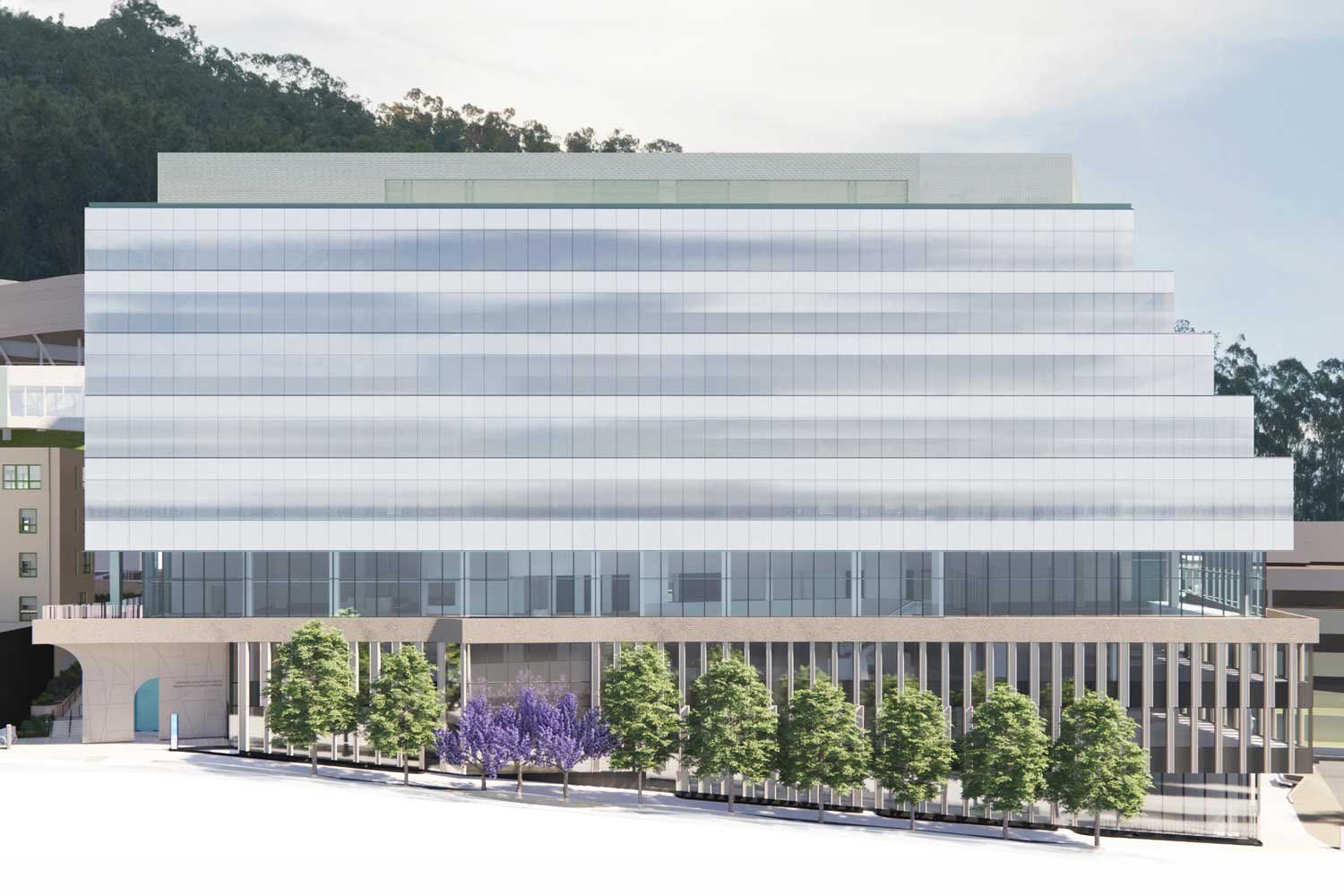
An initial rendering of the UCSF Barbara and Gerson Bakar Research and Academic Building. All renderings in this gallery are by Hensel Phelps Construction Company, HGA Architects and Snøhetta.
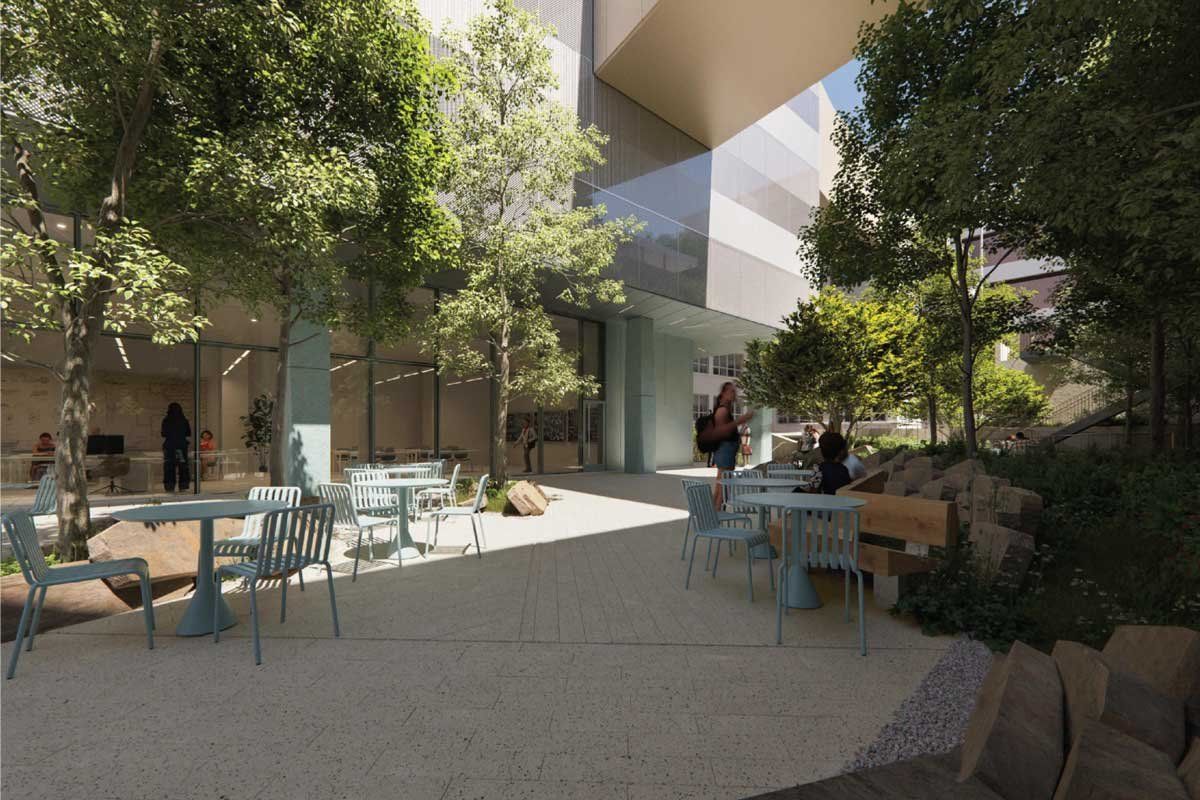
The initial renderings reflect the open space design and access to the outdoors and nature.
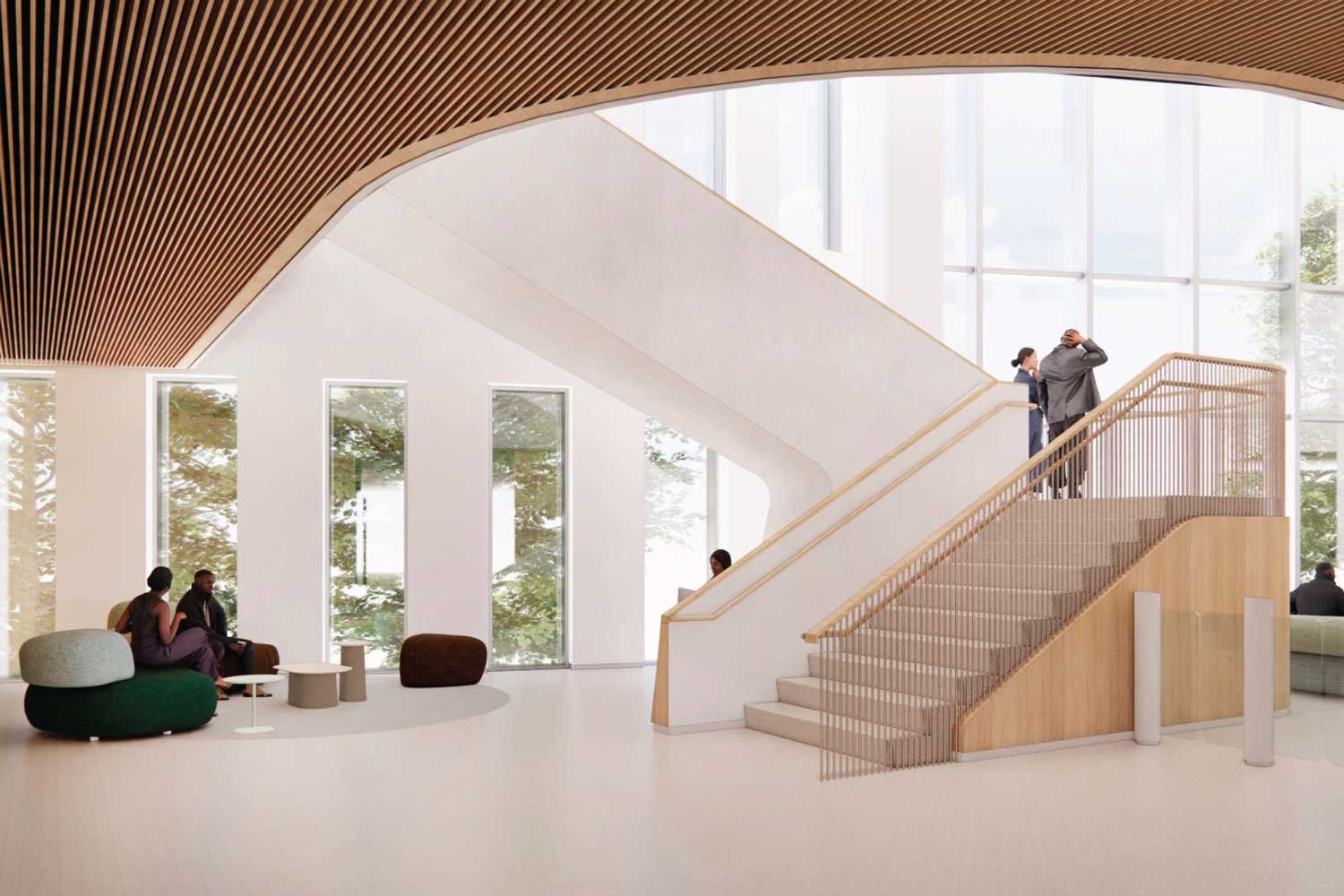
The building is designed with open spaces to foster collaboration among researchers, learners, educators and clinicians.
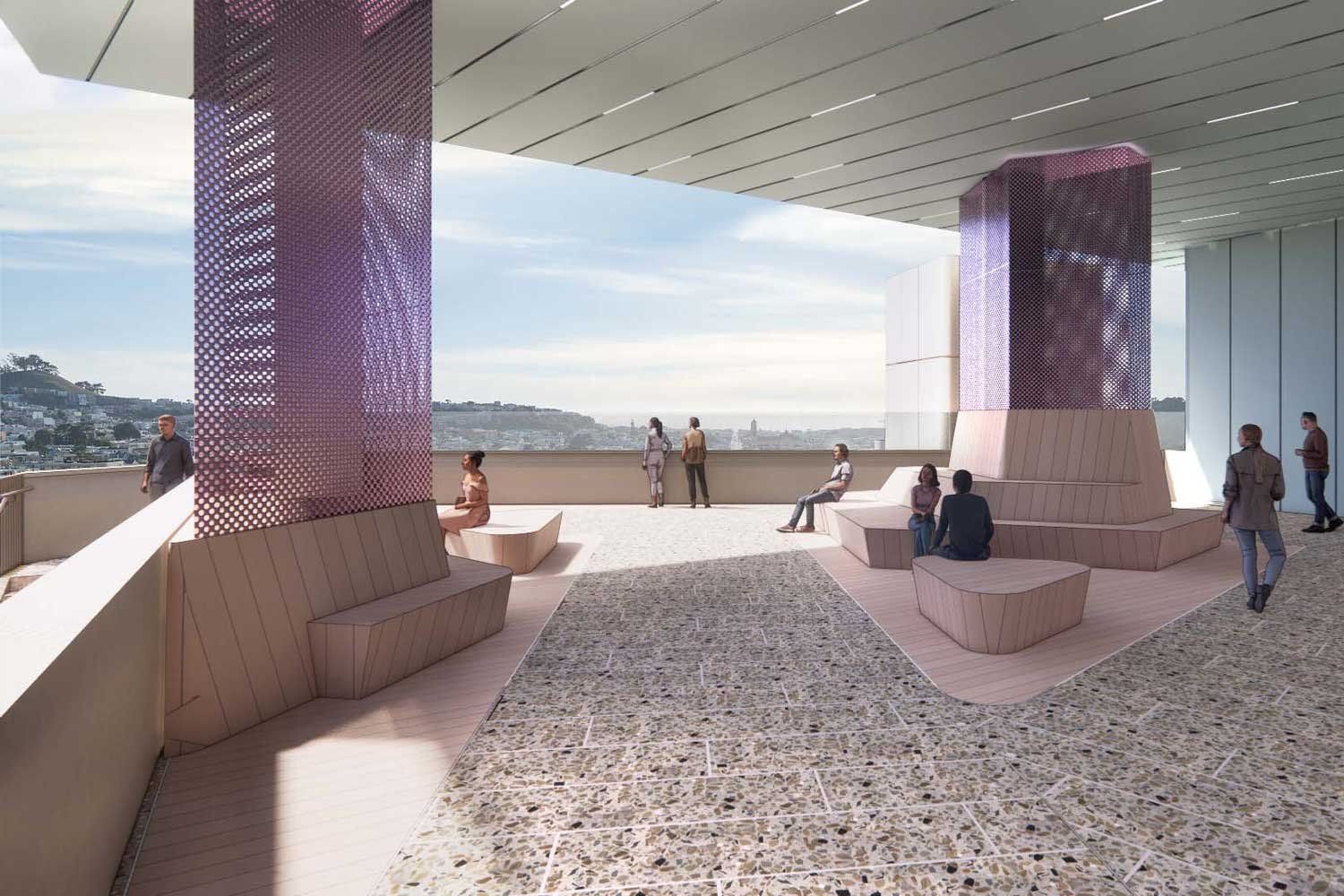
A publicly-accessible overlook will offer wide views of the Bay Area.
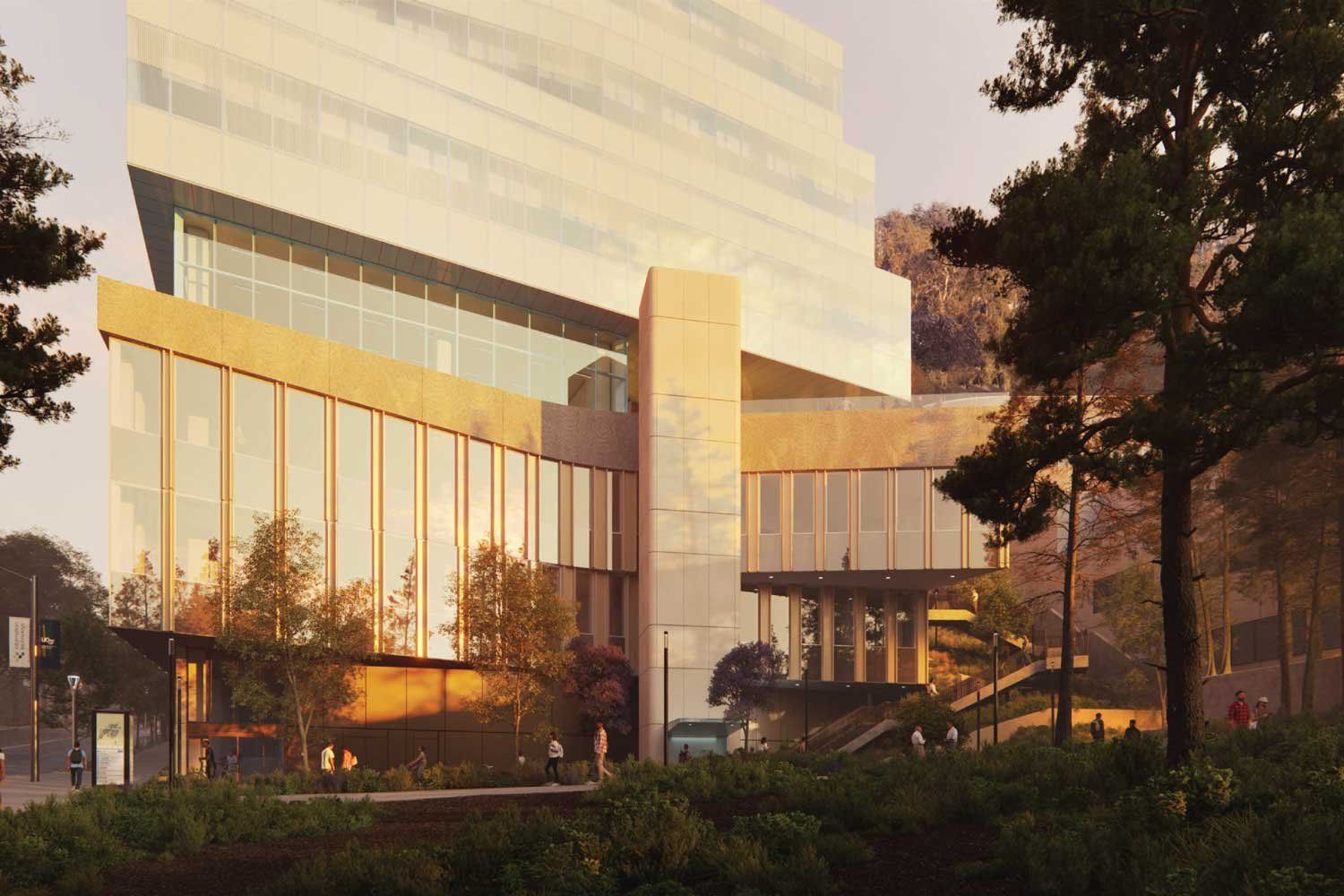
The building’s energy-efficient design puts it on track for achieving U.S. Green Building Council LEED Gold status.
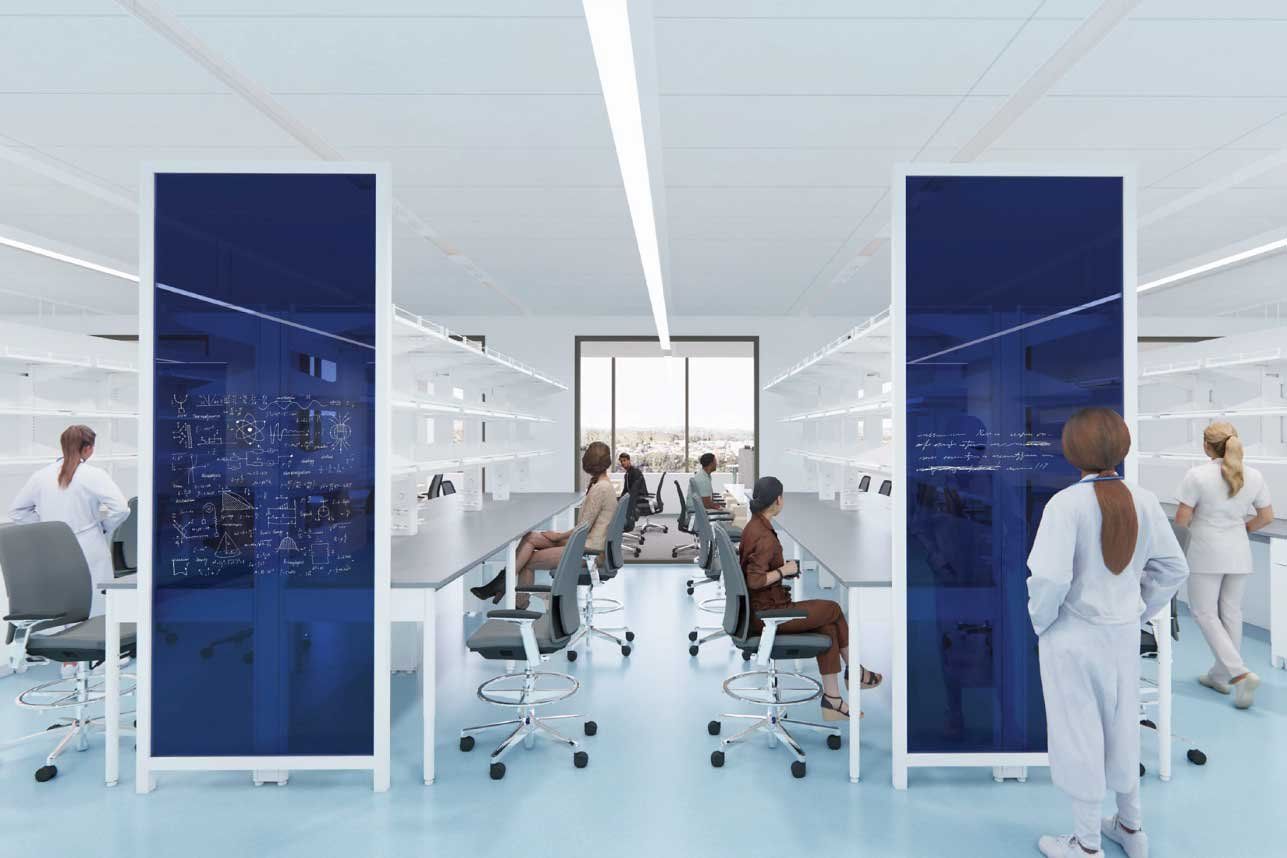
Open lab spaces organized by discovery themes will promote interdisciplinary research and innovation.
“As a leader in innovative research that advances health quality and equity for the diverse communities we serve, the School of Nursing looks forward to its new permanent home in the Bakar Research and Academic Building,” said Carol Dawson-Rose, PhD, RN, FAAN, dean of the UCSF School of Nursing and associate vice chancellor for Nursing Affairs. “With its state-of-the-art design, the building offers a vital collaborative space for nursing and sociology leaders of the future to study and train, driving excellence in research, clinical practice and education.”
The facility is central to the effort to modernize campus as a training ground for the next generation of scientists and students, and not just those who will be assigned space within its walls. In addition to making way for cutting-edge, bench-to-bedside research space, the building will also serve as a temporary home for research and academic groups while additional facilities are upgraded in subsequent phases of the Comprehensive Parnassus Heights Plan, which extends through 2050.
Built to Support a Natural Ecosystem
The 30-year plan will also create a welcoming campus that both showcases and enhances its natural surroundings. Classrooms will open to a courtyard linked to a publicly accessible green corridor that traverses the campus, connecting Golden Gate Park with the trails of Mount Sutro, while a public overlook will provide access to stunning views of the Marin Headlands and Golden Gate Bridge.
Known as the Parnassus Central Campus Site Improvements (PCCSI) project, this part of the plan will provide necessary infrastructure improvements in the center of the Parnassus Heights campus adjacent to Saunders Court.
Faculty, staff and university leadership have contributed to the design features that make it not only a place to encourage new advances in science and medicine, but one that will help revitalize the neighboring community.
“The ideas and imagination that have gone into these plans are becoming an actual physical place,” said Campus Architect Alicia Murasaki, assistant vice chancellor of Campus Planning. “We’re breaking ground to turn their ideas into concrete and steel reality.”
The Bakar Research and Academic Building is on track for achieving U.S. Green Building Council LEED Gold status, providing opportunities for improved energy efficiency and for supporting UCSF’s fossil-fuel-free initiatives. It is expected to surpass industry standards for laboratory energy efficiency for laboratory energy usage and use 40% less water than is the standard for such a structure.